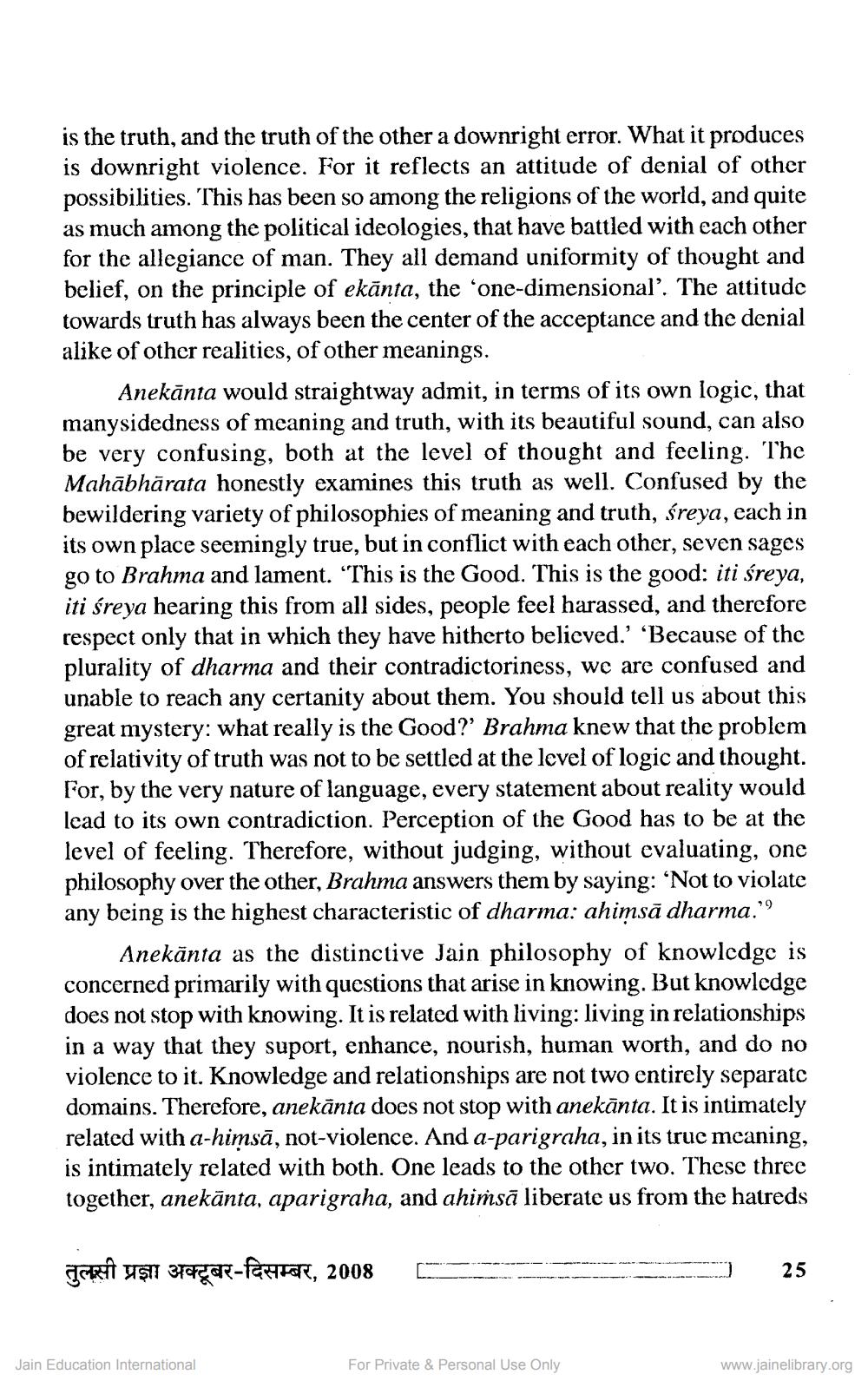________________
is the truth, and the truth of the other a downright error. What it produces is downright violence. For it reflects an attitude of denial of other possibilities. This has been so among the religions of the world, and quite as much among the political ideologies, that have battled with each other for the allegiance of man. They all demand uniformity of thought and belief, on the principle of ekānta, the 'one-dimensional'. The attitude towards truth has always been the center of the acceptance and the denial alike of other realities, of other meanings.
Anekānta would straightway admit, in terms of its own logic, that manysidedness of meaning and truth, with its beautiful sound, can also be very confusing, both at the level of thought and feeling. The Mahābhārata honestly examines this truth as well. Confused by the bewildering variety of philosophies of meaning and truth, śreya, each in its own place seemingly true, but in conflict with each other, seven sages go to Brahma and lament. “This is the Good. This is the good: iti śreya, iti śreya hearing this from all sides, people feel harassed, and therefore respect only that in which they have hitherto believed.' 'Because of the plurality of dharma and their contradictoriness, we are confused and unable to reach any certanity about them. You should tell us about this great mystery: what really is the Good?' Brahma knew that the problem of relativity of truth was not to be settled at the level of logic and thought. For, by the very nature of language, every statement about reality would lead to its own contradiction. Perception of the Good has to be at the level of feeling. Therefore, without judging, without evaluating, one philosophy over the other, Brahma answers them by saying: 'Not to violate any being is the highest characteristic of dharma: ahiņsā dharma.''
Anekānta as the distinctive Jain philosophy of knowledge is concerned primarily with questions that arise in knowing. But knowledge does not stop with knowing. It is related with living: living in relationships in a way that they suport, enhance, nourish, human worth, and do no violence to it. Knowledge and relationships are not two entirely separato domains. Therefore, anekānta does not stop with anekānta. It is intimately related with a-himsā, not-violence. And a-parigraha, in its true meaning, is intimately related with both. One leads to the other two. These three together, anekānta, aparigraha, and ahiṁsā liberate us from the hatreds
TARÎ YŞI 3tagare-fester, 2008
-
-
25
Jain Education International
For Private & Personal Use Only
www.jainelibrary.org




